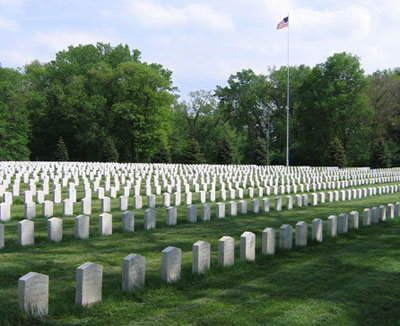By Gracie Wallace



After the Civil War ended in May of 1865, it came time to acknowledge and care for those who fought and lost their lives. The real tragedy of the war was the process of finding, tending to, and resting the dead so their bodies as well could have peace. We use mass graves, monuments, plaques, and headstones to remember those who fought and to be reminded of the sacrifice every day.
The Civil War began in April of 1861 and ended May of 1865. During this time, the total amount of lives lost were 620,000. This amount of deaths is more than any other American war combined. With these many deaths, the only solution to be able to account for all the bodies was to form troops. Sending out troops was a successful form of a solution; however, it began to take an emotional toll on the troops. Bodies were scattered under trees, hills, under rocks, etc., with their limbs severed, bodies mangled, and covered in blood. Seeing this was too much for some troop members to handle, causing them to resign from helping. The troops goals were to find the bodies and either bury them where they lay, return them to the family for a private memorial service, or send them to them mass graves.
Once the bodies were found and it came time to decide what to do with them, the use of mass graves were very popular. A mass grave is a grave containing multiple human corpses. They were popular because it was a designated space for the bodies and easily identifiable. Troops would lay the bodies together in anatomical position in the grave to create space and bury the deceased. Another method troops would have use is to bury them where they lay. This was the case only if there wasn’t ample room to fit any more bodies in graves or if there were only parts of the body available. In the case of burying bodies where they lay, families would be informed upon request and would sometimes set a stone or flag as a marker for them to go visit later.
Some of the land soldiers were buried in, if not part of a memorial, is almost unrecognizable today. Society so little thinks about the history of geography, or the historical significance of where we live. It is impossible to know every single place a human being or animal has been buried if we show nothing to prove for it. For example, a photo taken by Lynn Light Heller of Gettysburg in the last 10 years shows a peaceful clearing with scattered boulders in the middle of the field surrounded by trees. The same area of Gettysburg was photographed in 1863 with scattered bodies of Confederate soldiers. This comparison is an eye opener because it makes one think about how times used to be. The struggles of war and death compared to the more peaceful atmosphere today. The picture brings about a sad emotion towards history and makes us think about what we take for granted, and who fought to make a change.
Much of Southern United States was destroyed during the Civil War. The Civil war had the most deaths of any other American war combined. With over 620,000 deaths, the aftermath of the war was so brutal and disastrous, it had more American soldiers become casualties than the Battle of Gettysburg, Revolutionary War, and War of 1812 combined. This number includes soldiers that died from gunshot and disease, or those who were captured or wounded. The “clean-up” after the war required an immense effort, so much so books have been written on the behalf. The rebuilding period after the war was called the Reconstruction, which lasted from 1865 to 1877.
The burial of the dead is an important topic to learn about because the Civil War resolved issues of slavery and states rights. The burial of the dead represents the burial of slavery and birth of new rights. The end to the burial represents the resolution of conflict between North and South, and the graves we look at serve as a reminder of what it took for the United States to become a free nation.
In conclusion, the burial of the dead came at the end of a long, brutal war. Conflict over slavery between the North and South was resolved and the United States became a free nation after a Union victory. Although those deaths were a tragedy and it took many hours of commitment to bury them, we now remember them as those who fought for a everlasting cause.